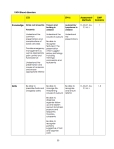Haematological Disorders in Children (PAP4)

Notes by Isabel Vielba
Case based session from Dr Stafford:
2 year old with 2 weeks of fever, non-blanching rash and weight loss
Fever
- Reduction in fever with antipyretics is not significant in terms of risk stratifying.
- Remove the fever as a confounding factor. I.E.
- Give antipyretics to make sure the child improves clinically when not hot and that tachycardia, tachypnoea etc. resolve with the fever.
It is Important to document the absence of features of Kawasaki’s if fever has been present for more than 5 days:
- cervical lymphadenopathy
- conjunctivitis
- coryza
- Mucosal changes
- desquamation of hands/feet.
See BMJ Clinical review (login required) and Paediatric EM Morsels for more details
Weight loss
- Can be difficult to accurately quantify.
- It is in general not normal for a child to cross their centile.
Acute Leukaemia
Abnormalities in the FBC should prompt a blood film.
Abnormal blood film should prompt a bone marrow aspirate.
Lymphoblastic leukaemia :
- 5 x more common than myeloid in children
- Prognosis is generally good
- Can present with fever, fatigue, bruising, bleeding, lymphadenopathy, limp.
For full details of childhood Acute Leukaemia in children read this BMJ article
Additional tests for the ED include G+S, LDH and markers for possible tumour lysis – K+, creatinine and uric acid. Ca2+, PO4+, TP, Albumin are also useful.
If you suspect tumour lysis – give fluids and allopurinol
Children requiring blood must have:
- irradiated red cells to avoid graft vs host reactions
- CMV negative blood

One thought on “Haematological Disorders in Children (PAP 4)”